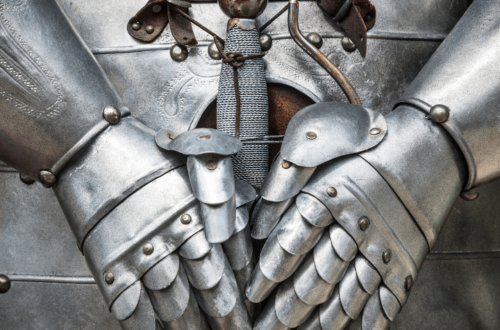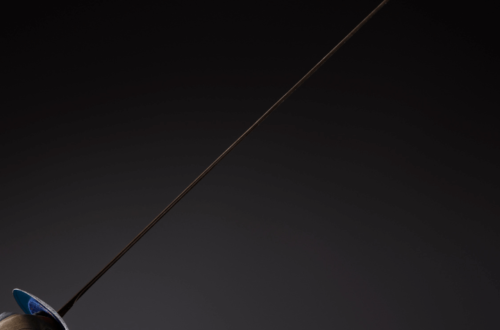Modern Tanks: Unveiling the Powerhouses of Global Armored Warfare
Tanks, the formidable machines of warfare, have undergone a remarkable transformation over the years. From their humble beginnings to their current state, modern tanks represent the pinnacle of technological advancement in armored warfare. Delving into the realm of modern tanks, this article will provide an in-depth exploration of their diverse types, remarkable technological advancements, and widespread deployment by nations around the world.
I. Main Types of Modern Tanks
A. Main Battle Tanks (MBTs)
Main Battle Tanks (MBTs) reign supreme on the modern battlefield. Renowned as the backbone of armored forces worldwide, modern tanks exhibit exceptional versatility, robust armor, and formidable firepower. MBTs excel in both offensive and defensive operations, providing a lethal combination of firepower, protection, and mobility. Examples of renowned MBTs include the M1 Abrams (USA), Leopard 2 (Germany), and T-14 Armata (Russia).
B. Light Tanks
Light tanks, as the name suggests, are designed for rapid mobility and reconnaissance missions. While they may lack the firepower and protection of MBTs, light tanks make up for it with speed and agility, allowing them to navigate challenging terrains swiftly. Notable light tank models employed globally include the Stingray (USA), Scorpion (United Kingdom), and AMX-10RC (France).
C. Amphibious Tanks
Amphibious tanks are a specialized breed, capable of seamlessly transitioning between land and water. With their unique design and engineering, they provide armed forces with the ability to conduct amphibious assaults and riverine operations. Prominent examples of amphibious tanks include the PT-76 (Russia), Type 63 (China), and AAV-7A1 (USA).
D. Armored Recovery Vehicles (ARVs)
Armored Recovery Vehicles (ARVs) play a vital role in battlefield logistics. These armored beasts are equipped with powerful winches, cranes, and specialized equipment to recover and repair disabled or damaged tanks. Noteworthy ARV models utilized internationally include the ARV3 (USA), BTS-4 (Russia), and FV514 Warrior Armoured Repair and Recovery Vehicle (United Kingdom).
E. Tank Destroyers
Tank destroyers are purpose-built to engage and eliminate enemy tanks. They boast powerful anti-tank weaponry, enhanced mobility, and optimized camouflage. These specialized vehicles provide a significant advantage in anti-armor operations. Notable tank destroyer models employed globally include the M1128 Mobile Gun System (USA), Raketenjagdpanzer Jaguar 2 (Germany), and PL-01 (Poland).
II. Technological Advancements in Modern Tanks
A. Armor and Protection Systems
Modern tanks employ advanced armor and protection systems to enhance crew survivability. Composite and modular armor combinations offer increased protection while maintaining acceptable weight standards. Reactive armor and explosive reactive armor provide active defense against incoming threats. Active Protection Systems (APS) use sensors and countermeasures to intercept and neutralize enemy projectiles.
B. Firepower and Weapon Systems
The firepower of modern tanks is awe-inspiring. Main gun calibers vary from 120mm to 125mm, and ammunition types include APFSDS (Armor-Piercing Fin-Stabilized Discarding Sabot) rounds and HEAT (High-Explosive Anti-Tank) shells. Advanced targeting systems, thermal imaging, and fire control enable accurate engagement of targets at long ranges. Secondary armaments such as machine guns and missile launchers further enhance a tank’s offensive capabilities.
C. Mobility and Engine Technology
Mobility is a crucial aspect of modern tank design. Tanks strive to achieve a high power-to-weight ratio, allowing for increased acceleration and maneuverability. Sophisticated suspension systems and adaptive technologies enable tanks to navigate rough terrain with ease. Additionally, advancements in engine technology, including gas turbine engines and hybrid propulsion systems, enhance the overall performance and fuel efficiency of modern tanks. Some prototypes even explore the possibilities of electric tanks, aligning with the trend of sustainable warfare.
D. Communication and Information Systems
Modern tanks are equipped with advanced communication and information systems, enabling seamless integration into network-centric warfare operations. These systems facilitate real-time data exchange, situational awareness, and command and control capabilities. Sensor suites, including radars and electro-optical sensors, provide tank crews with enhanced battlefield awareness, improving their effectiveness in combat.
III. Modern Tanks by Country
A. United States
The United States is at the forefront of tank development, boasting the iconic M1 Abrams MBT as its mainstay. The M1 Abrams, with its advanced armor, powerful 120mm gun, and cutting-edge technology, has solidified its position as one of the world’s most formidable tanks. Ongoing modernization programs, such as the M1A2 SEPv3 upgrade, ensure that the U.S. remains at the cutting edge of tank technology.
B. Russia
Russia has a rich heritage in tank design and manufacturing, with the T-14 Armata leading the way. The T-14 Armata features an unmanned turret, an innovative active protection system, and advanced targeting capabilities. Russian tanks excel in rugged terrains and harsh climates, with ongoing developments and upgrades keeping them at the forefront of armored warfare.
C. China
China has made significant strides in tank development, with the Type 99 as its flagship MBT. The Type 99 boasts impressive firepower, advanced composite armor, and an active protection system. Chinese tanks prioritize a balance between firepower, protection, and mobility, and continuous advancements in technology ensure that they remain a force to be reckoned with.
D. European Union
Within the European Union, collaborative efforts have led to the development of noteworthy tank programs. The Leopard 2, jointly produced by Germany and other European nations, is a prominent example. European tanks emphasize a combination of firepower and advanced protection systems, with ongoing research focusing on further enhancing their capabilities.
E. Other Countries
Numerous countries around the world operate their own modern tanks, each with unique features and adaptations. Israel’s Merkava series, for instance, integrates advanced defensive measures and crew protection. South Korea’s K2 Black Panther boasts advanced composite armor and a powerful gun. Sweden’s Stridsvagn 122 features a unique autoloader system. These examples highlight the diversity and ingenuity displayed by different nations in armored warfare.
IV. Conclusion
Modern tanks serve as the epitome of technological prowess in armored warfare. From the versatile Main Battle Tanks to the agile Light Tanks, from the amphibious capabilities of specialized tanks to the crucial support provided by Armored Recovery Vehicles, these machines have reshaped the battlefield landscape. Technological advancements in armor, firepower, mobility, and communication systems have revolutionized their capabilities.
Various countries around the world are actively engaged in the development and deployment of modern tanks, each with its own unique strengths and innovations. As we move forward, continuous research and development will drive the evolution of tanks, ensuring they remain at the forefront of military operations.
Modern tanks, with their lethal firepower, unparalleled protection, and strategic mobility, play a pivotal role in safeguarding national security and maintaining peace. They are the powerhouses that shape the outcome of conflicts, combining cutting-edge technology with the expertise of highly trained crews. In the ever-changing landscape of warfare, modern tanks stand tall as the guardians of armored supremacy.



